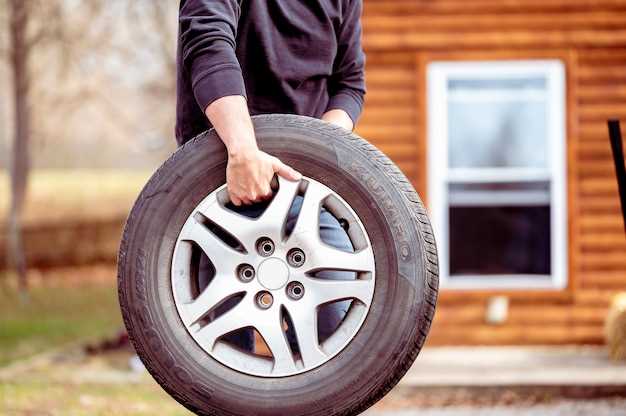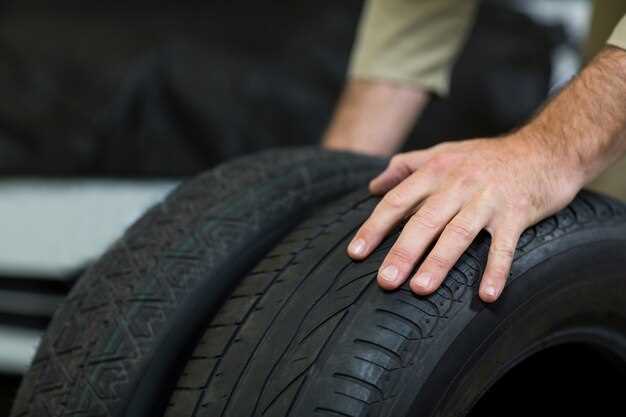
The performance of a vehicle is significantly influenced by the type of tires it is equipped with. Tires are the only contact point between the car and the road, making their selection critical for achieving optimal grip and handling. A well-chosen set of tires can enhance acceleration, cornering stability, and braking efficiency, allowing drivers to experience a more responsive and controlled ride.
When considering tires for enhanced grip and handling performance, several factors come into play. The tread pattern, rubber compound, and tire width all contribute to how the tire interacts with various road surfaces and conditions. For example, a tire designed with an aggressive tread pattern may provide superior traction on wet or off-road surfaces, while performance tires often focus on maximizing handling and stability during high-speed maneuvers.
Additionally, understanding the specific requirements of your vehicle and driving style is essential in making an informed decision. Whether you’re looking for all-season versatility or specialized performance options, there are a plethora of tires available that cater to different needs and preferences. This article will guide you through the important considerations when choosing tires, ensuring you can make the right choice for better grip and handling performance.
Understanding Different Types of Performance Tires

Performance tires are specially designed to enhance a vehicle’s grip, handling, and overall performance. They come in various types, each tailored for different driving conditions and preferences. Understanding the distinctions among these tires is essential for optimal driving experience and safety.
There are three main categories of performance tires: summer tires, winter tires, and all-season tires. Summer tires are constructed with a softer rubber compound that provides superior traction on dry and wet road surfaces. They feature shallower tread depths and larger contact patches, allowing for enhanced handling and stability.
Winter tires, on the other hand, are engineered for cold weather conditions and snow-covered roads. They have deeper treads and special rubber compounds that remain flexible in low temperatures, improving grip on slippery surfaces. All-season tires offer a compromise, providing decent performance across various weather conditions but may not excel in extreme scenarios.
| Type of Tire | Key Characteristics | Ideal Conditions |
|---|---|---|
| Summer Tires | Soft rubber, shallow tread depth, excellent dry and wet traction | Warm, dry, and wet conditions |
| Winter Tires | Deeper treads, flexible rubber, optimized for snow and ice | Cold, snowy, and icy conditions |
| All-Season Tires | Balanced performance, moderate tread depth, versatile | Moderate climates with occasional rain and light snow |
When selecting performance tires, consider your driving habits, the climate in your area, and the types of roads you frequently navigate. Each tire type serves a distinct purpose, and choosing the right tires can significantly enhance your vehicle’s grip and handling performance.
Key Features That Enhance Tire Grip
Several essential features contribute to the performance and grip of tires, ensuring superior handling and safety under various driving conditions.
One of the most critical aspects is the tire’s rubber compound. A softer rubber formulation typically provides better traction, especially on wet or uneven surfaces. The increased flexibility allows the tire to conform to the road, enhancing grip. However, a balance must be struck, as overly soft tires can wear out quickly and sacrifice longevity.
Another key feature is the tread design. Tires with deeper grooves and wider channels significantly improve water evacuation, reducing hydroplaning risk and maintaining contact with the road. Conversely, a performance-oriented tread pattern with fewer grooves can enhance grip on dry surfaces, allowing for quicker acceleration and sharper cornering.
The tire’s profile, or aspect ratio, also plays a crucial role in handling performance. A lower profile tire typically offers improved grip and responsiveness due to a stiffer sidewall, which reduces flex during cornering. This stability is essential for high-performance vehicles seeking enhanced driving dynamics.
Lastly, tire width is a vital consideration. Wider tires have a larger contact patch with the road, which directly translates to better grip. This feature allows for improved braking capabilities and cornering stability, as more rubber is in contact with the ground.
By focusing on these key features–rubber compound, tread design, profile, and width–drivers can select tires that significantly enhance grip and overall handling performance, adapting to various driving conditions and personal preferences.
Choosing the Right Tire Compound for Your Needs
Selecting the appropriate tire compound is crucial for optimizing performance and handling capabilities. Tire compounds vary significantly in their formulation, which directly affects grip and longevity. Softer compounds typically provide better traction, especially in dry conditions, and are often preferred for sports cars and high-performance vehicles. However, these tires tend to wear out faster, making them less suitable for everyday driving.
On the other hand, harder compounds offer enhanced durability, making them ideal for regular commuting or in environments where tire longevity is a priority. These tires may sacrifice some grip for extended lifespan and lower rolling resistance, which can improve fuel efficiency. For drivers who frequently engage in off-road activities, a specialized compound designed for rugged terrain can provide superior handling and control on uneven surfaces.
When choosing a tire compound, consider the specific performance requirements based on your driving habits and conditions. For instance, if you frequently navigate wet or slippery roads, look for compounds that incorporate advanced rubber technologies. These formulations can improve hydroplaning resistance while maintaining performance during heavy rains.
In addition, seasonal conditions should also influence your choice. Winter tires utilize unique compounds that remain pliable in low temperatures, enabling better grip on snow and ice. Conversely, summer tires excel in warmer temperatures and are engineered for optimal performance in dry conditions.
Ultimately, understanding the characteristics and trade-offs of various tire compounds will lead to informed decisions that enhance both grip and handling performance, creating a safer and more enjoyable driving experience.
Assessing Tread Patterns for Optimal Handling
Choosing the right tire tread pattern is crucial for achieving superior grip and handling performance. The design of the tread affects how tires interact with the road surface, influencing traction, stability, and overall driving experience.
Here are key factors to consider when assessing tread patterns:
- Types of Tread Patterns:
- Symmetrical Tread: Offers balanced handling and even wear across the tire surface, making it suitable for various driving conditions.
- Asymmetrical Tread: Combines elements for enhanced grip on wet and dry surfaces, maximizing performance in diverse weather conditions.
- Directional Tread: Designed to channel water away from the tire, this pattern improves wet traction and reduces hydroplaning risks.
- Tread Depth:
The depth of the tread can significantly influence grip:
- Deeper treads enhance grip in off-road conditions and on loose surfaces.
- Shallower treads provide better contact for dry road performance but may compromise traction in adverse conditions.
- Groove Design:
The arrangement of grooves impacts handling:
- Wide grooves help evacuate water and enhance wet grip.
- Narrower grooves are suited for stability and responsiveness on dry pavement.
In addition to these factors, tire compounds also play a vital role in grip and performance. Softer compounds typically offer better traction but may wear faster, while harder compounds enhance durability at the cost of grip.
Ultimately, selecting the right tread pattern requires balancing performance needs with driving conditions. Regularly assessing tire performance and tread wear ensures optimal handling and safety on the road.
Impact of Tire Pressure on Grip and Stability

Tire pressure plays a crucial role in determining the grip and stability of a vehicle. Properly inflated tires maintain optimal contact with the road surface, allowing for better traction. When the tire pressure is too low, the tire sidewalls flex excessively, leading to a larger contact patch but reduced responsiveness. This can cause the vehicle to feel sluggish and unsteady during maneuvers, compromising overall performance.
On the other hand, over-inflated tires reduce the contact area, leading to a harder ride and diminished grip, especially on uneven surfaces. This can result in increased tire wear and more challenging handling characteristics, particularly in cornering situations. Therefore, maintaining the correct tire pressure is essential for enhancing grip and ensuring stable performance in various driving conditions.
Additionally, tire pressure affects heat generation during driving. Both under-inflated and over-inflated tires can increase heat buildup, negatively impacting grip and reducing the lifespan of the tire. By regularly checking and adjusting tire pressure to the manufacturer’s recommendations, drivers can optimize their tires’ performance, enhancing both safety and driving enjoyment.
Maintenance Tips to Preserve Tire Performance
Regular tire maintenance is crucial for ensuring optimal grip and handling performance. Start by frequently checking tire pressure, as under-inflated or over-inflated tires can significantly affect performance and safety. Use a reliable gauge to monitor the pressure at least once a month and before long trips.
Next, inspect the tread depth to ensure adequate grip on various surfaces. A minimum tread depth of 2/32 of an inch is generally recommended; however, deeper treads may be necessary for specific driving conditions. Consider using a tread depth gauge to accurately measure wear and replace tires when necessary.
Rotating tires according to the manufacturer’s recommended schedule promotes even wear and prolongs tire life. Typically, tires should be rotated every 5,000 to 8,000 miles. This practice helps maintain consistent grip across all four tires, enhancing overall vehicle handling.
Regularly check for signs of damage, such as cuts, punctures, or bulges. Any visible irregularities should prompt immediate professional assessment and possible replacement to prevent performance degradation and safety issues.
Finally, maintain proper alignment and balancing. Misalignment can lead to uneven tire wear and negatively impact handling. Regular alignment checks, particularly after hitting potholes or curbs, can help preserve grip and enhance performance.
